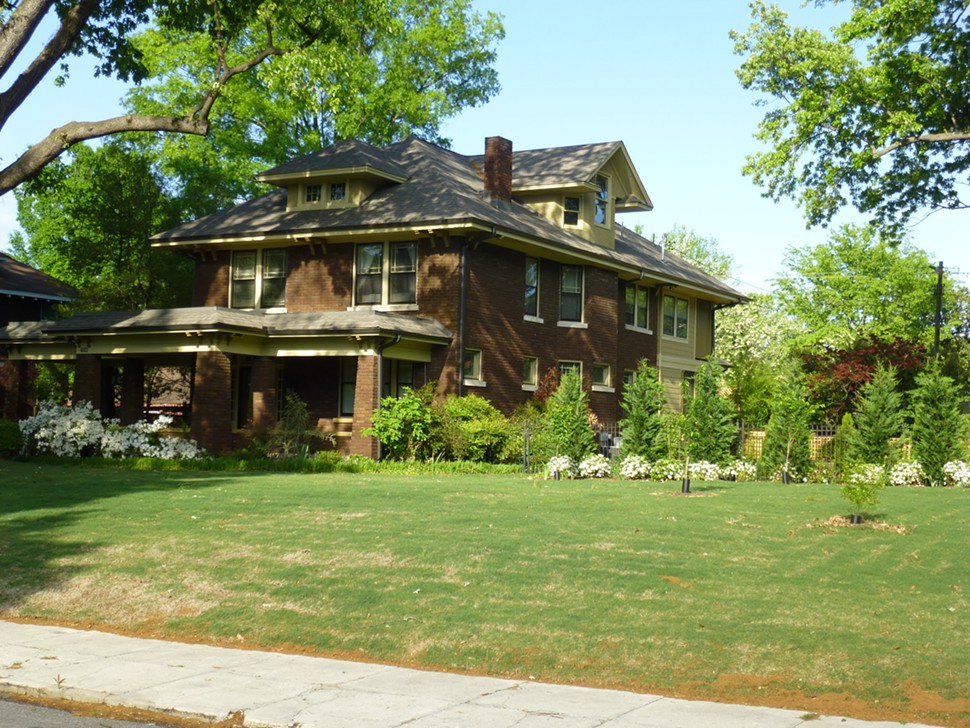There seem to be some concerns about gentrifying Midtown if the Sears Crosstown project is completed.
I say we should be so lucky. Gentrification, a fancy word for raising property values and the quality of neighborhoods, is a good thing, not a bad thing. If the Crosstown planners who want to turn the Sears building into a vertical urban village can’t understand that then I don’t know why they’re fooling with this monster.
My perspective on the Sears building comes, daily, from the front door of my house in the Evergreen Historic District three blocks from Sears, where the summer sun sets behind the tower. My wife and I bought our house in 1984, raised our children here, sent them to Snowden school down the street, and have welcomed and said good-bye to a succession of mostly exemplary neighbors. Friends who live in East Memphis or the suburbs or other cities say we live on a good street. We agree.
We paid $86,500 for the house. The county appraisal we got in March values it at $204,200, an average annual increase of 3 percent over 29 years in which we put on a few roofs and added a new garage, central air, and a bedroom-to-bathroom conversion. This compares to the nearly 9 percent annual return on the Dow Jones Industrial Average over the same period of time. If only . . .
Granted, I have taken pains to keep the county appraisal low because it means lower property taxes, and we don’t plan on moving any time soon. On the other hand, this is a big chunk of our retirement plan, and if we did decide to move we would want to get top dollar.
One reason appraisals are all over the place in this part of Midtown is because of the notoriously uneven quality of the houses. There are a bunch of relatively new houses built on the old expressway corridor in the 1990s, several classic bungalows and four-squares that are 100 years old, and quite a few blighted wrecks. Some of them are occupied, some are not. A stone’s throw from my place is a rental for college students. Some people would describe them as members of Richard Florida’s creative class. The owners of the house, since 1989, own a small business in Midtown. They get rental income. The students are able bodied. But for whatever reason, nobody believes in house or yard maintenance. Every year, the neighbors have to notify code enforcement, which does what it can.
This is the story of Midtown. For every dump, there are four or five houses that are well kept, sometimes at great cost. A couple of fix-ups on our street were featured in the HGTV television program “Best Bang For Your Buck.”
Bless ’em.
My friend Carol Coletta, a Memphian who studies and speaks about cities for a living, says “cheap cities are cheap for a reason.” Memphis is a cheap city. Nashville isn’t. We could use some Nashvillization in our neighborhoods. I am not at all sure that Midtown needs more housing on the scale the Crosstown planners envision. A case can be made that it needs less housing. There are good, 1999 houses with 1700 square feet of living space two blocks from Sears Crosstown on the market today for $118,000 and older houses selling for much less than that.
The neighborhoods around Sears Crosstown are affordable. They are not in any danger of becoming unaffordable due to gentrification. That is as wild an exaggeration as the fear-mongering stories about Kroger’s at Poplar and Cleveland where many of us shop. Granted, 28 years ago there was a bombing at the old Kroger’s across Poplar where Walgreen’s is now, but, hey, stuff happens.
Seriously, rising property values, blight reduction, and increased home ownership are good things for neighborhoods and for Memphis at large. If this is gentrification, bring it on.


